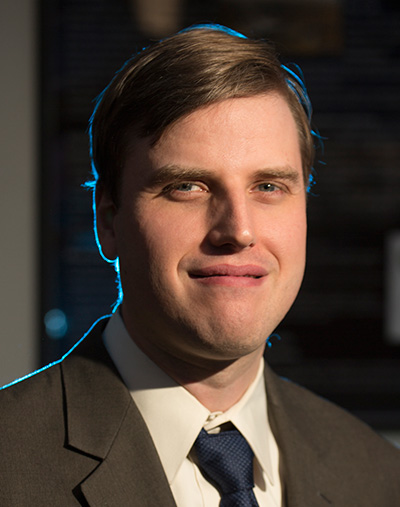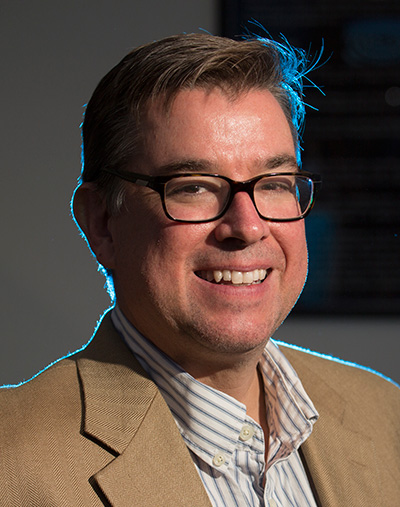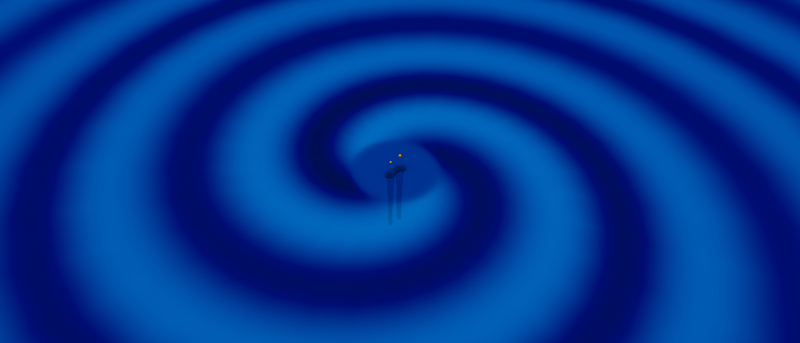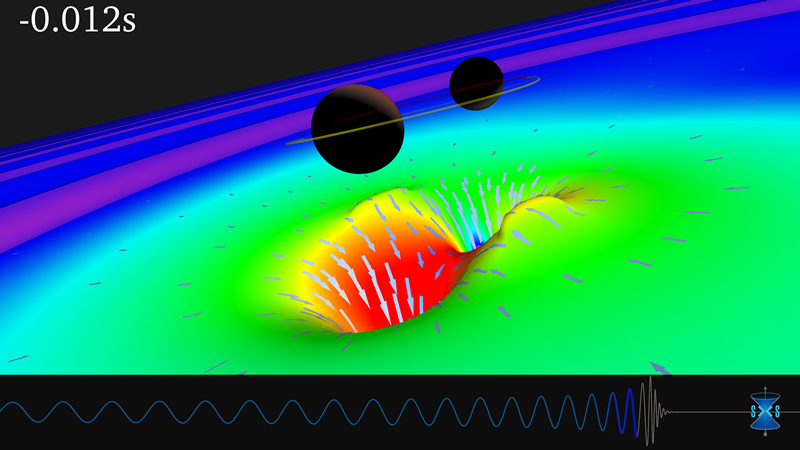CSUF News Service
Gravitational Waves Detected 100 Years After Einstein’s Prediction
LIGO Opens New Window on the Universe With Observation of Gravitational Waves From Colliding Black Holes
CSUF Physicists Play Significant Role in Discovery
February 11, 2016
For the first time, scientists have observed ripples in the fabric of space-time called gravitational waves, arriving at the earth from a cataclysmic event in the distant universe. This confirms a major prediction of Albert Einstein’s 1915 general theory of relativity and opens an unprecedented new window onto the cosmos.
Gravitational waves carry information about their dramatic origins and about the nature of gravity that cannot otherwise be obtained. Physicists have concluded that the detected gravitational waves were produced during the final fraction of a second of the merger of two black holes to produce a single, more massive spinning black hole. This collision of two black holes had been predicted but never observed.
The gravitational waves were detected on Sept. 14, 2015 at 5:51 a.m. Eastern Daylight Time (9:51 UTC) by both of the twin Laser Interferometer Gravitational-wave Observatory
(LIGO) detectors, located in Livingston, Louisiana, and Hanford, Washington, USA. The LIGO Observatories are funded by the National Science Foundation (NSF), and were conceived, built and are operated by Caltech and MIT.
The discovery, published today (Feb. 11) in the journal Physical Review Letters, was made by the LIGO Scientific Collaboration (which includes the GEO Collaboration and the Australian Consortium for Interferometric Gravitational Astronomy) and the Virgo Collaboration using data from the two LIGO detectors.
READ: The journal article "Observation of Gravitational Waves from a Binary Black Hole Merger" »
LIGO research is carried out by the LIGO Scientific Collaboration, a group of more than 1,000 scientists from universities around the United States — including Cal State Fullerton — and in 14 other countries.
 Smith joined Cal State Fullerton in 2010 to help launch and build the gravitational-wave research program. His research — funded by the National Science Foundation and Research Corporation for Science Advancement — focuses on identifying and removing sources of noise in the
Smith joined Cal State Fullerton in 2010 to help launch and build the gravitational-wave research program. His research — funded by the National Science Foundation and Research Corporation for Science Advancement — focuses on identifying and removing sources of noise in the  Read is an astrophysicist who explores how neutron stars can produce gravitational waves. She studies how matter behaves at extremely high densities inside neutron stars and how that activity might be measured from astronomical observations of gravitational waves. Read more... (https://news.fullerton.edu/2013fa/gravitational-wave-research.asp)
Read is an astrophysicist who explores how neutron stars can produce gravitational waves. She studies how matter behaves at extremely high densities inside neutron stars and how that activity might be measured from astronomical observations of gravitational waves. Read more... (https://news.fullerton.edu/2013fa/gravitational-wave-research.asp) Lovelace is a computational relativist who creates and studies computer simulations and visualizations to better predict the sources of gravitational waves, such as colliding black holes or a black hole tearing apart a neutron star. Both Lovelace and Read joined CSUF in 2012 and collaborate using a supercomputer, the Orange County Relativity Cluster for Astronomy (ORCA), specially built for the CSUF research efforts to observe gravitational waves. Read more... (https://news.fullerton.edu/2013fa/gravitational-wave-research.asp)
Lovelace is a computational relativist who creates and studies computer simulations and visualizations to better predict the sources of gravitational waves, such as colliding black holes or a black hole tearing apart a neutron star. Both Lovelace and Read joined CSUF in 2012 and collaborate using a supercomputer, the Orange County Relativity Cluster for Astronomy (ORCA), specially built for the CSUF research efforts to observe gravitational waves. Read more... (https://news.fullerton.edu/2013fa/gravitational-wave-research.asp) Agnew, a CSUF alumnus, studies theoretical relativity with his research focusing on mathematical methods to find and study cosmological and astrophysical solutions of Einstein’s equations. Specific to the LIGO experiment, he is examining methods and complex analytical techniques to build and study models of the objects that emit the gravitational-wave signals.
Agnew, a CSUF alumnus, studies theoretical relativity with his research focusing on mathematical methods to find and study cosmological and astrophysical solutions of Einstein’s equations. Specific to the LIGO experiment, he is examining methods and complex analytical techniques to build and study models of the objects that emit the gravitational-wave signals. 

